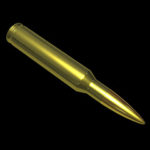The Fountain of Neptune is a monumental civic fountain located in the eponymous square, Piazza del Nettuno, next to Piazza Maggiore, in Bologna, Italy. Its bronze figure of Neptune, extending his reach in a lordly gesture of stilling and controlling the waters, is an early work by Giambologna, completed about 1567.
An innovation of Giambologna’s fountain designs is the fantastic and non-geometrical forms he gave to the basins into which water splashed and flowed, “curiously folded, bulging and elastic in form”, as Rosalind Grippi remarked. The fountain is a model example of Mannerist taste of the courtly elite in the mid-sixteenth century: construction of the statue was commissioned by the Cardinal Legate of the city, Charles Borromeo, to symbolize the fortunate recent election of Borromeo’s uncle as Pope Pius IV. The work was designed by the Palermitan architect Tommaso Laureti in 1563, with an over-lifesize bronze of the god Neptune on the top, executed by Giambologna, who had submitted a model for the fountain of Neptune in Florence, but had lost the commission to Baccio Bandinelli. Before the fountain was built, an entire edifice was demolished to make space for it. The fountain was completed in 1565, and the Neptune was fixed in place within a couple of years. The logo of the Maserati car company is based on the trident in this Neptune statue. In 1920 one of the Maserati brothers, the artist Mario Maserati, used this symbol in the logo at the suggestion of family friend Marquis Diego de Sterlich. It was considered particularly appropriate for the sports car company due to fact that Neptune represents strength and vigor; additionally the statue is a characteristic symbol of the company’s original home city.

















